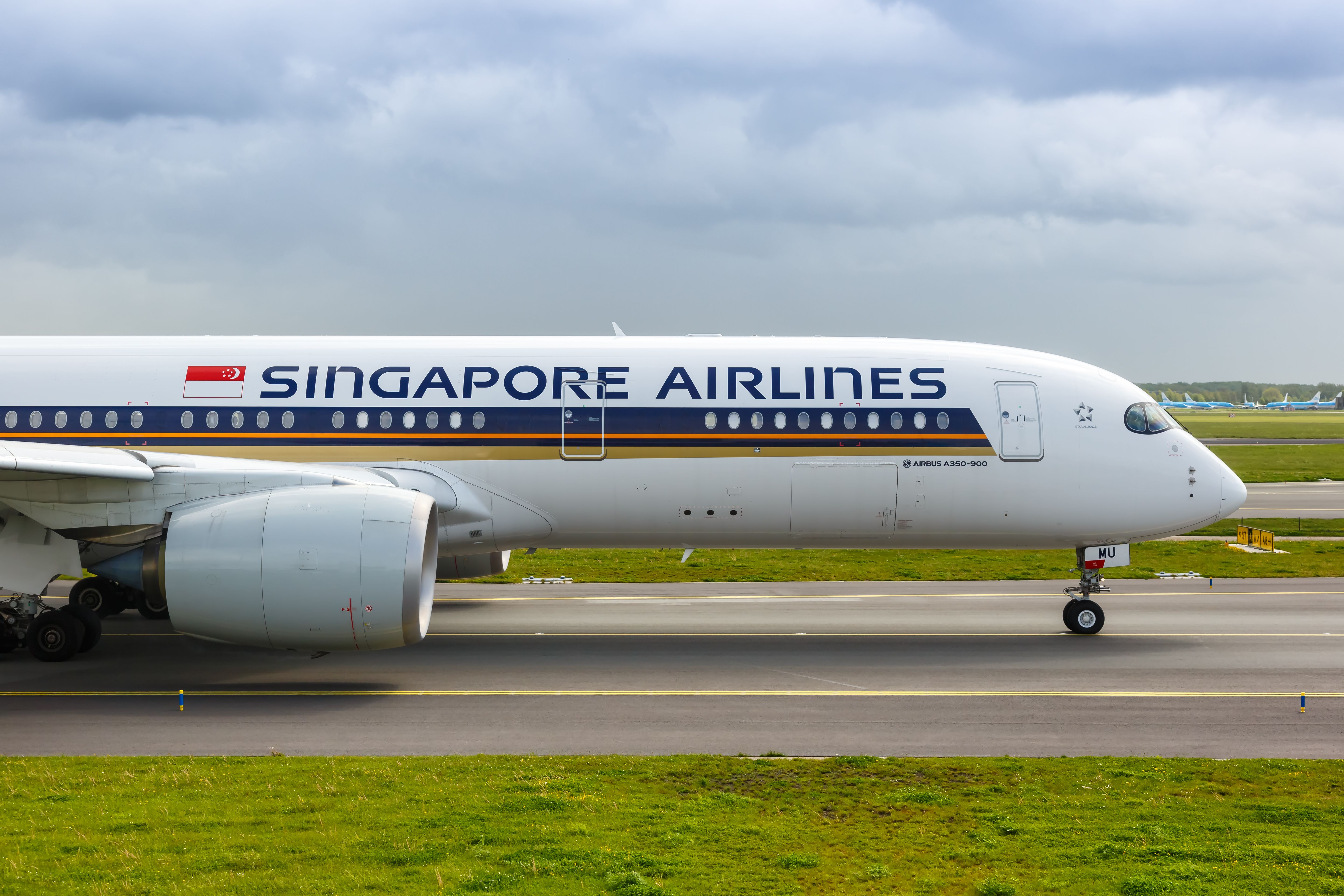Summary Singapore Airlines offers ultra-long-haul non-stop flights to Newark and JFK, targeting high-paying passengers. Operating without an economy class cabin on these flights eliminates excess weight concerns. Passenger comfort, market demands, and operational considerations influence the carrier's decision to offer limited seating classes on these unique routes.
Singapore Airlines launched its ultra-long-haul services to Newark Liberty International Airport (EWR) in June 2004. The carrier first deployed its Airbus A340-500s on the route, but the service was suspended in November 2013 and the aircraft returned to Airbus. Then, in October 2018, Singapore Airlines resumed its non-stop service to Newark, this time with a sub-fleet of specially configured A350-900ULRs (ULR = Ultra Long Range).

In November 2020, the airline went on to begin non-stop services to New York John F. Kennedy International Airport (JFK), also with the A350-900ULR. With the re-launch of flights in 2018, Singapore Airlines' stole Qatar Airways' crown by operating the world's longest commercial flight.
The oneworld member's non-stop service between Doha (DOH) and Auckland (AKL) had previously been the world's longest flight, followed by Qantas' flights between Perth (PER) and London Heathrow (LHR). One curious feature is that neither the Airbus A340-500s nor the A350-900ULRs deployed by Singapore Airlines on its services to and from New York feature economy class seating. Why does the carrier operate services without an economy class cabin? Is it purely for increased passenger comfort, or are there other reasons, too? Singapore Airlines' ultra-long-haul flight schedule First, let's take a look at the airline's current flight schedule.
Singapore Airlines operates two daily non-stop flights from its hub at Singapore Changi Airport (SIN) to the New York City area - one to John F. Kennedy International Airport (JFK) and one to Newark Liberty International Airport (EWR). Flights operate as per the following schedule: Flight number Route Departure Arrival Block time SQ24 SIN-JFK 12:10 18:50 18 hours 40 minutes SQ23 JFK-SIN 22:30 05:30 (+2 days) 19 hours SQ22 SIN-EWR 22:35 06:00 (+1 day) 18 hours 25 minutes SQ21 EWR-SIN 09:35 16:45 (+1 day) 19 hours 10 minutes Passenger comfort and market demands Singapore Airlines' award-winning economy class is regularly hailed as one of the best in the industry.
However, even with the best service in the world, 19 hours is still a long time to sit in an economy class seat, and a potentially difficult prospect to sell to many passengers. By offering non-stop services, Singapore Airlines is tapping into the high-paying market of business travelers and other passengers prepared to pay a premium to save time connecting at other airports en route. This market is relatively small, and a reduced capacity of only business class and premium economy seats allows Singapore Airlines to successfully meet passenger demands, capturing a high-paying market without carrying excess seats on the route unnecessarily.
While a non-stop service saves time and convenience, the benefit of a one-stop option is the opportunity for passengers to disembark and stretch their legs. One-stop options between Singapore and New York are offered by a variety of carriers via their respective hubs, including: Cathay Pacific via Hong Kong (HKG) Philippine Airlines via Manila (MNL) United Airlines via San Francisco (SFO) Korean Air via Seoul (ICN). They include new and returning airport pairs, shaking up the order.
Aircraft weight Another consideration is aircraft weight. To fly the more than 9,500 miles (16,700 km) between Singapore and New York, a large amount of fuel is needed, and such vast quantities of fuel add significantly to the aircraft's weight. Add to that the weight of passengers and their baggage, and the airline may encounter payload restrictions if it carries the standard 250-300 passengers on its Airbus A350-900s.
Therefore, a reduced passenger configuration has the additional advantage that it eliminates the risk of any operational disruption as a result of excess weight. Airbus A340-500 vs A350-900ULR Airbus A340-500 Singapore Airlines launched the route in 2004 using its specially configured Airbus A340-500s. Each aircraft had a capacity for 181 passengers—64 in business class and 117 in premium economy.
However, in 2008, the airline reconfigured its A340-500s to a business class-only configuration, featuring 100 business class seats. This was done in response to market demands. Airbus A350-900ULR Singapore Airlines' Airbus A350-900ULRs can carry up to 161 passengers in a two-class configuration - 67 in business class and 94 in premium economy.
The airline's business class suites are in a 1-2-1 layout, while its premium economy seats are 2-4-2, although the last three rows feature a single premium economy seat at each side of the aircraft, which also has access to its own storage compartment (these seats are bookable for an extra charge). Business class passengers enjoy a 68-inch seat pitch and 28-inch width, while even in premium economy, the pitch of 38 inches and width of 19.5 inches are still significantly more comfortable than standard economy class.
Economy class travel between Singapore and New York For those still looking to travel in economy class with Singapore Airlines between Singapore and New York, the carrier also operates a one-stop service via Frankfurt (FRA) with its Boeing 777-300ERs. Frankfurt - New York is one of several fifth-freedom routes operated by Singapore Airlines. The carrier recently announced that another such route, between Manchester (MAN) and Houston (IAH), will end in April 2025 .
All five of the airline's longest routes are flown with the Airbus A350. Singapore Airlines' services between Singapore and both Newark and New York JFK are unique ultra-long-haul routes, and are currently the two longest non-stop routes in the world. From increased passenger comfort to technical and operational issues, the carrier uses aircraft without an economy class cabin on these flights.
.



















